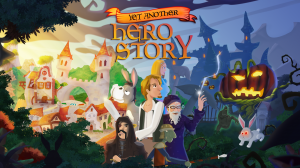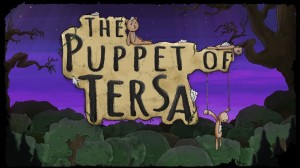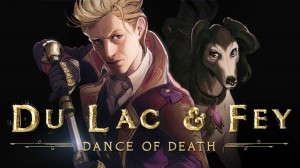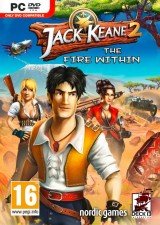Review for Yet Another Hero Story
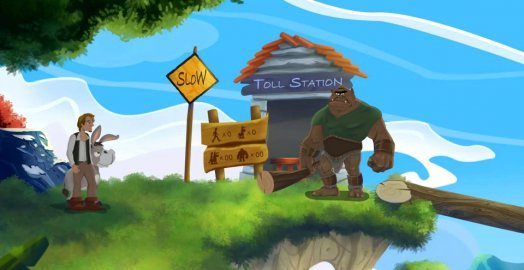
Game information
One of the best things about adventures is their ability to present unique worlds full of life that are directly impacted by the player’s decisions. No matter how nice to look at or how well-written the script may be, however, a game’s actual mechanics must also measure up. This is the challenge for Sinking Sheep’s Yet Another Hero Story, a point-and-click fantasy adventure with strong visuals and genuinely entertaining writing that’s held back by some questionable design choices. Fortunately, these blemishes don’t seriously detract from what is overall a fairly fun experience.
Yet Another Hero Story is about a young upstart named Martin McNish, who prefers to use his wits rather than his courage to slip out of any situation and has just graduated from “The Great Adventurer’s School”. Not only is Martin looking to make a name for himself, he also plans to pay off his student debts by finding great riches on his journey. After a short encounter with a troll and a faulty bridge (which is nothing more than a fallen tree trunk), Martin and his trusty donkey Rupert make it to the city of Kavinbridge. Shortly after arriving, Martin learns two things: one, that a noblewoman named Alicia Goodheart has recently been kidnapped, and two, in order to join the city’s adventuring guild, he needs to gather a few items to prove his worth. And so Martin sets off to be a hero, get the girl, and become rich, all with the help of a kooky cast of characters, including (but not limited to) a kid named Bobby Glasseye who sells “homing pigeons”, middle-aged fairies, and one really fuzzy Duke.
This game is very much a comedy, taking classic genre tropes and turning them on their heads to create amusing scenarios rather than playing it as a straight high fantasy. While the world itself can be a bit generic (it doesn’t even have a name), the focus on modern humour, unique character interactions, and mundane solutions to fantastical problems all gel together rather nicely, making the storytelling one of the highlights. As you journey through the luscious, brightly coloured landscapes, the mood is consistently upbeat, the inhabitants all living relatively normal lives and complaining mostly about first-world problems.
The troupe of NPCs encountered in your quest delivers most of the humour with dialogue interactions, cut scenes and somewhat weird tasks you must accomplish in order to gain their favour. Some of the more unique inhabitants include an artist who’s studying to be a lawyer in secret because he’s a terrible painter, a reluctant wizard named Ziggy who hates visitors and only agrees to help because you know the super simple password to his house, and more than one troll who are just trying to make a decent living and don’t appreciate Martin’s stereotyping of them as monsters.
In keeping with the game’s satirical “just another” theme, it’s not until the second half that most NPCs are even given proper names. Until then there’s only a select few who have monikers other than “the strongman”, “the merchant” or “the librarian”. Most characters you come across have their own distinctive personalities, sense of humour and problems for Martin to solve, which really adds to the charm of the adventure. It leaves you guessing what potentially ludicrous thing the next madcap native will need solved for them, like finding a new sacred symbol for a pastor who worships “The Great Spirit Tree of Ang”.
Martin himself always seems to get the last word in and doesn’t care much about getting on people’s nerves. He’s snarky but can back up his forwardness with creative problem-solving skills and is ultimately willing to jump through hoops for everyone. Occasionally he even has moments of humility thanks to the ridiculous situations he finds himself in, such as having to carry around a foul shirt to smell like a famous hero who refused to shower, or accidentally losing his new hero sword immediately after acquiring it. Such moments offer just enough balance to make him likable rather than an irritating jerk.
Controlling Martin is pretty easy, as the left mouse button performs contextual actions while the right inspects items in Martin’s inventory, which is good for hints on how to use them. It’s all very standard and works well enough except for one minor complaint when trying to combine items. Once you select something from inventory, the selection bar closes so you have to re-open the bag if you plan on using two items together. It’s not a big deal, but having the menu remain open would’ve been far more intuitive, especially since you’ll be combining a fair number of objects.
The 2.5D environments are broken up into different major areas that can be clicked on the travel map to reach instantly, which is helpful because of Martin’s otherwise slow walking speed. He’s not in a rush to go anywhere even if you are, and there’s no way to run or speed things up. This becomes a nuisance when you’re backtracking through some of the larger areas like Kavinbridge. I sometimes ended up repeatedly clicking ahead of Martin out of boredom even though I knew it wouldn’t do anything. Adding to the wait, you can’t return to the world map on a whim, as each place only has one exit/entrance. This one design choice can end up bringing the pace to a crawl at points, especially when you’re backtracking for a single step of a puzzle, only to immediately depart to another area when you’re done.
The challenges you’ll face mostly boil down to the tried and true inventory variety, and like the writing they’re ridiculous in the right way, such as creating your own fake “golden fleece” or wearing a rubber troll mask to order strong liquor while still obviously looking like you from the chest down. What’s ironic is when the problems end up having mundane solutions in this fantastical world. Broken scissors that can’t cut? Just find a way to bend them back into working order. Puzzles like these are so normal for a story this bizarre that they end up feeling the most abnormal, and when I did solve them I thought, “Was it really that easy?” and grinned like a doofus. One particular standout involves trekking through a forest filled with killer rabbits, which requires being extra observant of your surroundings. It makes imaginative use of the environment, and I wish there were more puzzles like it.
I found a couple obstacles difficult for the wrong reasons, like the ones that require clicking on an item multiple times, which is not brought up as something you might need to do beforehand. I needed a guide for the first of these puzzles, but once I knew it was a viable mechanic I was prepared when it came up again. Overall the puzzles aren’t too hard, and both Martin and the NPCs are upfront with clues relating to item usage. Other than one annoying dialogue tree at the very end of the tale, there isn’t any real consequence if you “fail” a puzzle, and even that immediately sends you back to the beginning of the sequence to try again.
The hand-drawn visuals are the best part of the experience, as everything features a very stylized cartoony look that wouldn’t look out of place in an animated film. This is largely a blessing but can be a curse at times, as the environments are so jam-packed with little details that small interactive items can seamlessly blend into the background, and unfortunately there’s no way to highlight hotspots without mousing over them individually. It’s not usually a problem, but some areas have more dynamic angles that make it harder than it needs to be to find all the important objects.
After the starting tutorial area in a small valley underneath the troll “bridge” before reaching Kavinbridge, there are a total of 14 central locations that are evenly split between the first and second halves of the game, a new page of the world map opening up only after a certain point during the story. Most of these locales have only a couple rooms at most, and only six (two of which you can’t revisit) are larger with many individual scenes. Some of the places you’ll visit include a pair of different cities, some surrounding forested areas, a cave, and an evil castle where the climax of the story occurs.
Each setting has a unique look, so that even though there are multiple forest areas, a couple feature lush greens like you’re visiting in the spring, another is brimming with towering mushrooms and orange autumn leaves, and the other is foreboding and flooded with fog, with red eyes peering out of the bushes. Both cities are distinct as well; one is clean (or as clean as a medieval city can realistically be) and the other is seedy with a bar populated by drunks, mercenaries and the occasional monster. The second half locations vary more wildly than the first, which is a good visual representation of the weirder and weirder puzzles you’ll have to solve the closer you get to finishing your quest.
The character designs are also diverse, with no two looking exactly alike, except the bridge guard and bartender trolls, and that’s done on purpose for laughs. The three fairies look similar, but even they have unique hair styles, skin colour and differently coloured dresses. Because of the cartoon aesthetic, the various personas come through clearly in their depictions: the librarian is a plain Jane with straight hair and glasses; the mercenary has a goatee, eye patch, and a hood worn indoors; and the spindly soon-to-be-lawyer painter sports a French-styled curly mustache. While none of the models are over-the-top outrageous, they’re quirky enough to be memorable.
Character animations don’t quite stack up to the quality of the art design, but they’re not bad either. Martin’s animations are a bit limited, but every NPC has their own small idle movements that help them stand out against the static backgrounds. There are also a couple of cutscenes that aren’t the smoothest but provide a nice break from the normal gameplay, as rare as they are.
The audio falls a little short of the graphics, as not every area has its own score, often opting only for appropriate ambient effects like a stream of flowing water or the wind howling at the entrance of Ziggy’s mountaintop wizard tower. They work, but more music would’ve been welcome instead of the same generic forest sounds used in more than one place. Most of the major areas do have their own accompaniment, along with a few of the smaller, more unique areas. The castle has multiple pieces to correspond with certain rooms, though even it has other rooms left in silence. All tunes are simple jaunty numbers that loop every ten seconds, but it works surprisingly well. A couple of favourites are the slow tempo woodwinds in Kavinbridge’s theme, and the scared tree area with its whimsical flute that makes it one of the jollier forest areas.
As for acting, Yet Another Hero Story takes an interesting approach in which only specific bits of dialogue are voiced, usually (though not always) the first line of dialogue when meeting a new character or during story-heavy moments. It’s somewhat off-putting when a character will start out voiced but then fall silent while subtitles continue on. Another issue is the obvious inconsistency of recording quality between voice actors. Martin’s lines sound clean while the troll’s voice, for example, always sounds a bit muffled. For consistency I’m tempted to recommend playing with the voices off, but Martin’s voice-over is genuinely great, the actor conveying his limited lines with proper emotion.
Technically the game ran fine for me for the most part, but I did run into an exasperating, almost game-breaking glitch down the home stretch when I took an invisibility potion too early, which worked too well and caused Martin to completely disappear from the screen with the inventory along with him. Saving and reloading didn’t fix the problem, so I ended up losing an hour’s worth of progress because there’s no checkpoint feature and it had been a while since I saved. So save regularly and be wary of that possibility when experimenting with inventory to solve puzzles. Fortunately, I ran into no other bugs in my six-hour playthrough. (Note: since time of writing an update has corrected the invisibility bug, so it should no longer be an issue.)
Even with some of its rough edges, Yet Another Hero Story is an enjoyable fantasy journey filled with likable characters, a clever script, and wonderful art direction. It doesn’t do much new with the familiar formula, but it’s a fun, competently made traditional adventure that is entertaining enough to recommend to anyone looking for more medieval point-and-click shenanigans in their lives.


